“Never underestimate the power of stupid people in large groups” – George Carlin
An old woman with a face deformed by the presence of multiple warts and wearing loose shabby clothes, with a pointy hat on her head and flying in the sky sitting on a broom. That is the classical description that fairy tales of 21st century depicts as the image of the witches in its stories. These evil women were always up to something bad & who finally meets a fitting end on the hands of the protagonist of the story.
A good bedtime story for the children, it amuses most of the adults reading these to the children. However, in real life, the matter of witches was not always a laughing matter & the people branded witches were almost always innocent people. This article is about a time when the human race was guided by blind belief and superstitions and decisions were not based on logic and scientific temperament, but on wild prejudices.
It is a bit difficult to say that when the practice of witchcraft started. However, almost all religious texts of the world describe witchcraft and witches in some form or another, since very ancient times. Hence, the concept of using magic spells to bring about a change, existed from a time much before Christianity spread across Europe and America. Not always were these so-called witches evil, as many times they were also considered benevolent souls, with special abilities to treat disease or see the future (astrologist). Some also believe that the word witchcraft, itself is derived from the word “wit” meaning wise, which makes the word’s meaning as “craft of the wise.”
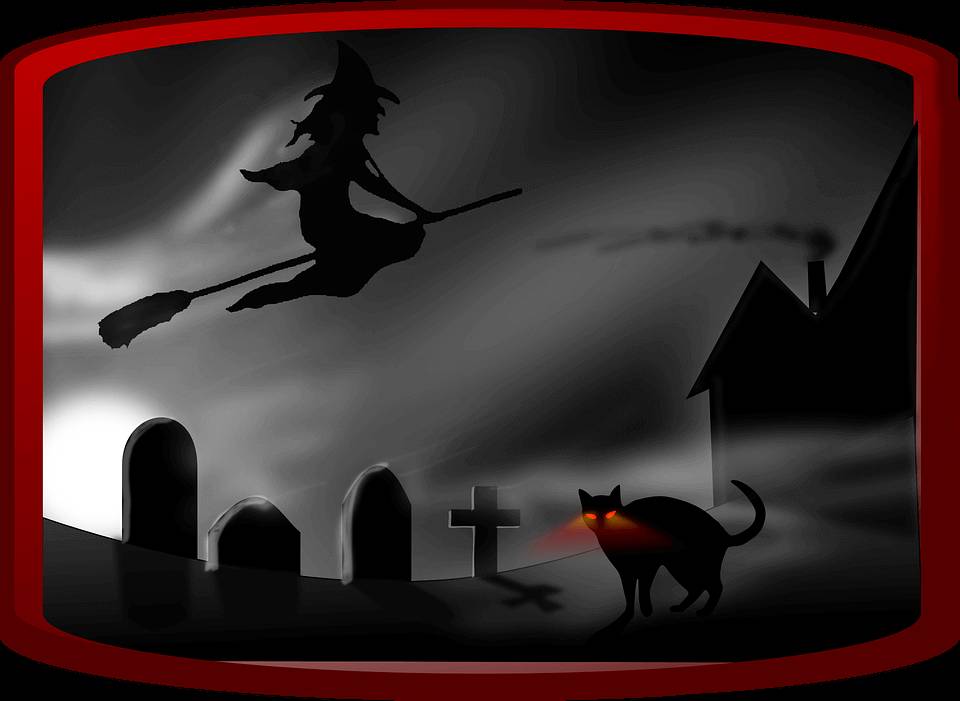
As Europe entered the early modern period of history (late 14th century to early 18th century), religious extremism in the land began to grow. With science in its infancy, all matters of ill health & other personal or professional misfortunes were looked upon with skepticism. Almost always a higher power was held responsible for unexplained or less understood natural phenomenon. If the final effect was good, it was god’s hand & if it was otherwise, then the devil was blamed. But what is devil without his followers? Certainly, the devil alone, without his fan following (the witches in this case) can’t do any mischief in the world.
The religious institutions of the time added to the harm, by encouraging in many cases these superstitions. One of the names that crop up in this matter is Heinrich Kramer – a rather infamous Catholic clergyman from Germany. He is (dis)credited with writing – “Malleus Maleficarum” which when translated means “Hammer of Witches”.
Malleus Maleficarum which was first published in 1487, in the German city of Speyer, was essentially a guidebook of how to recognize, hunt and interrogate witches. Witches were to be treated like criminals and their extermination was endorsed. Courts were ordered to examine the accused witches, intensively and harshly (even authorizing torture to elicit confessions) and carry out the harshest of punishments, so as to wipe out witchcraft from the face of the earth. The punishment advised was death in most cases. This book remained the bestseller of the time for the next 2 centuries, (the number surpassed only by Holy Bible) and the instructions were incorporated in most court hearing related to witchcraft during the time. The half-baked, misjudged and malicious information was slowly absorbed into the social fabric of the time.
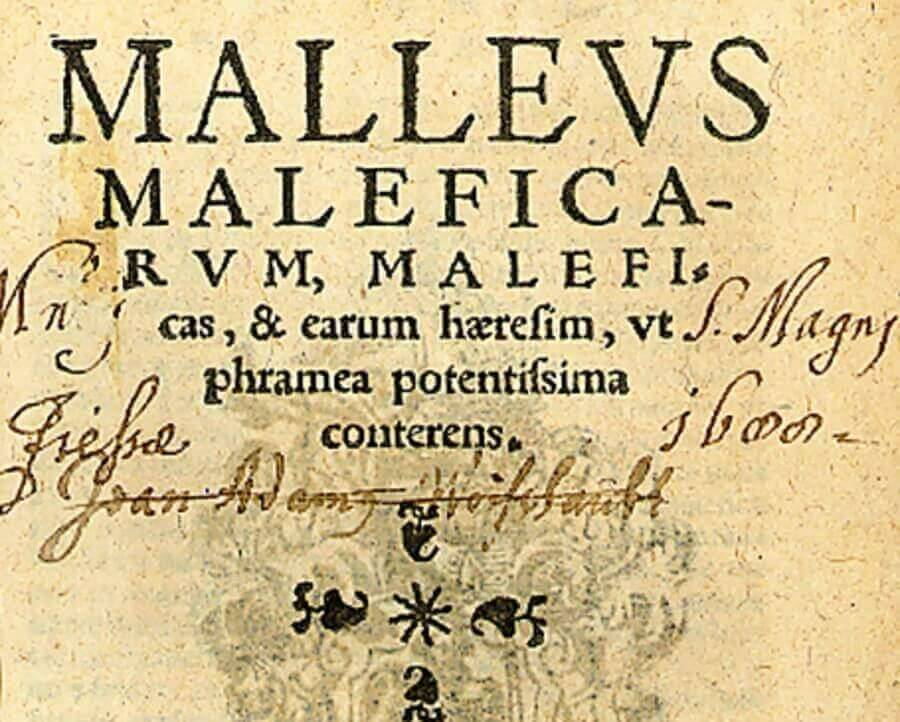
With inspiration provided by Malleus Maleficarum, the clergy and even the simple people on the street went on an overdrive to search for real or imaginary witches. Pope Innocent VIII had already given authorization to monks in 1484 to investigate suspected witches. From the late 15th century to early 18th century, entire Europe and its American colonies would have a multitude of witch trials, which would become notorious later on. The most surprising fact, which continues to confuse modern-day thinkers is how the trials, which had not been an initiative of a single person or organization, but were sporadic in nature, could wreak so much havoc in so far off places?
The so-called witches, in this context, were mostly women (although sometimes also men and children), who were believed to have gained magical powers by worshipping the devil, instead of god. They carried out the devil’s order by poisoning targets, destruction of livestock, causing illness, failing harvest or causing birth defects. Accusations of witchcraft without evidence were quite often hurled at each other by members of society. Most of the accused belonged to the weaker sections of the society – the elderly, the poor or other social outcasts. Other suspects were people who were strange and did not fit into the box. But nobody in the society was safe from accusations.
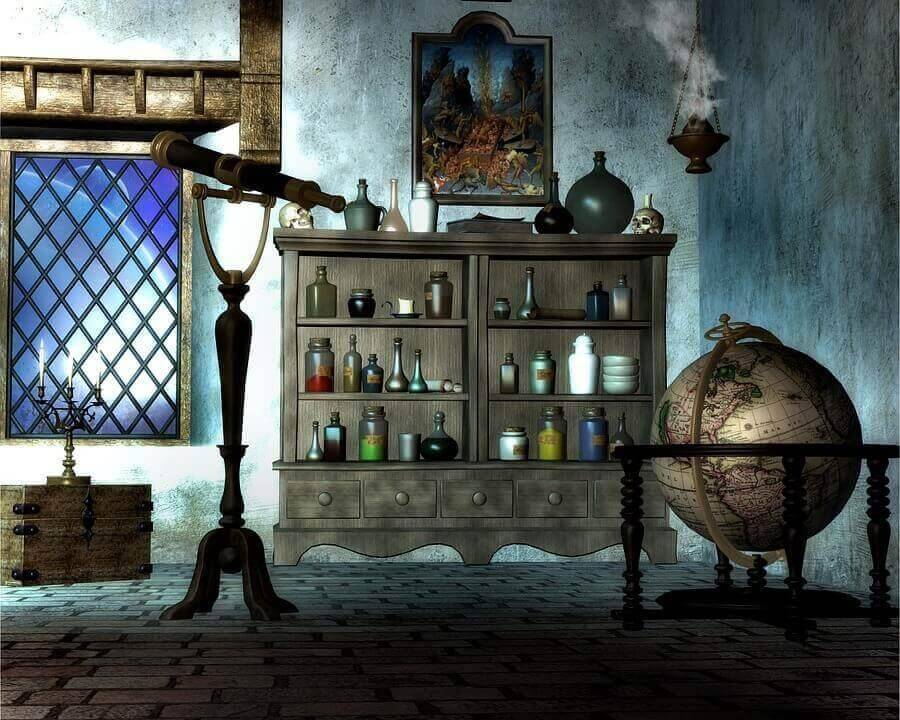
Believe in witches became widespread. Although encouraged by religious authorities, the actual trial and punishments were carried out by secular courts and local administration. The interrogation of suspects included torture, which forced many innocent victims to confess their guilt, which they had not even committed. They also falsely implicated others, to substantiate their claims which further increased the number of innocent victims. The trials sometimes would drag on for years and on other times for months. Most of the accused were burnt to death, only a rare few escaped with a smaller sentence like prison or fines.
Witch trials in Europe continued for many centuries. Some 80,000 people believed to be practicing witchcraft were put to death between the year 1500 and 1660 in Europe. Majority of the witch hunts took place in Germany (witch trials in Germany had the highest execution rate), Belgium, Netherlands, France, Italy, Switzerland, and England. Discussing all of these cases are certainly not possible, but a few famous (or notorious) cases certainly deserves to be mentioned.
Walpurga Hausmannin was a German midwife, who was born sometime between 1510 and 1527 and lived and worked in Bavaria. The life of this unfortunate widow would have remained unknown if it hadn’t been unfortunately been associated with witchcraft. Her trial was one of the most ruthless witch trials in Germany. Although at the outset it has to be mentioned, that many scholars believe that the story of Walpurga Hausmannin is part history and part fiction.
Walpurga Hausmannin’s life had been unremarkable, till her arrest on charges of witchcraft, sorcery, and vampirism in the year 1587. The old & poor widow was an easy target and her accusers took full advantage of this fact. After her arrest, she was subjected to terrible torture and forced to make horrible (and downright ridiculous) confessions. Many believe that her confessions were much more than what was expected of her & she did this as she realized that she wouldn’t be allowed to go free, and believed that her confession would bring a quick end to her sufferings.
As per her confession, soon after she became widowed, she established a relationship with a demon named Federlin. Federlin later made Walpurga Hausmannin swear allegiance to devil and promised to rid her of her poverty. She allegedly even met the devil himself and used a magical ointment to harm her victims – which included children, adults, animals, and even crops. The list of crimes she confessed to, was very long & it was very easy for the authorities to sentence her. Her victims included 41 children and 2 mothers in labor, and a multitude of other people and animals (including cows, pigs, geese, and a horse).
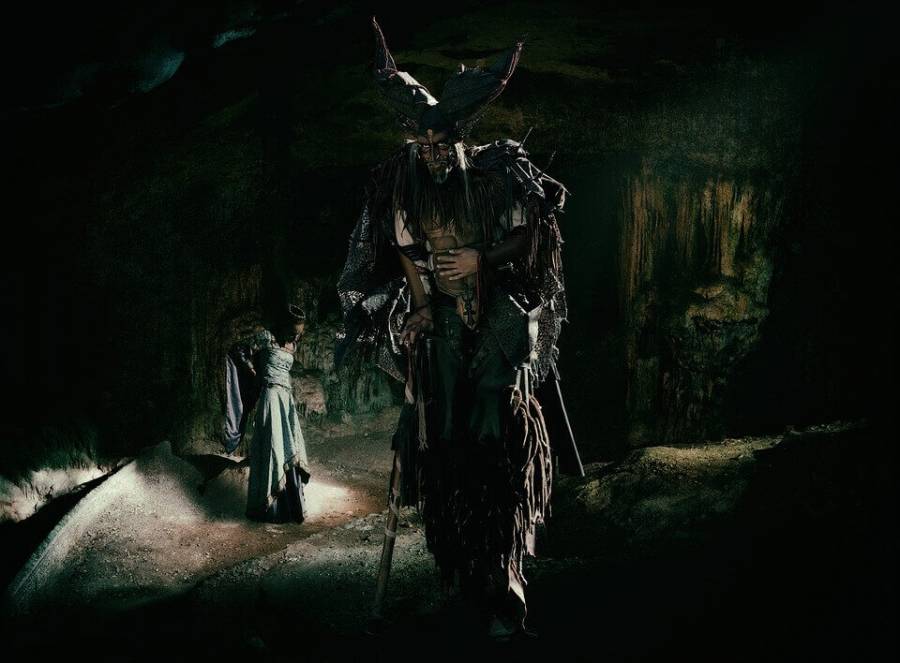
The decision of the authorities was swift and unanimous. The church (under the bishop in Augsburg) and the royal court, found her guilty and sentenced her to death. Walpurga Hausmannin was tortured inhumanely both during her trial and even after her confession. On 20th September 1587, she was burned at the stake as a witch. Her ashes were also not allowed to remain on soil but were dumped in a stream. In this way, an old, poor, weak and harmless woman was denied dignity both in life and even after her death.
Just east to Edinburgh lies the town of North Berwick. This picturesque seaside town may be an important tourist attraction now, but four centuries back, it was a dangerous place to be in; thanks to the King of the time – King James VI of Scotland.
It was an unfortunate storm that heralded the misfortunate events that were to happen. King James VI of Scotland was traveling to Denmark to marry princess Anne of Denmark, sister of Christian IV, the king of Denmark. A terrible storm forced him to seek refuge in Norway for some time. The return with the queen was equally bad, with further storms being encountered on the way and needless to say, the whole experience left the king shaken.
Now an ordinary person may have cursed his luck & may hurl abuses to people around him. But what does a King do? Maybe understand that a natural phenomenon is just that & should not be taken personally. Or a 2nd option of trying to find, if the natural disaster was an assassination attempt on the life of the King and his wife, by a disloyal subject with access to supernatural power (as the admiral of escorting Danish fleet had suggested). King James decided on the second option and start what would later become one of the most infamous witch trials in Scotland.

So, when someone has tried to assassinate the King, by using a storm, when he was sailing at sea, what do the people do? The try to find the witch responsible and soon many of them were found (or invented). A large group of people were apprehended. These included – Agnes Sampson (a respectable elderly local midwife & healer), Dr. John Fian (a local schoolmaster) and Gellie Duncan (a young servant). As was normal in these cases, they were all tortured severely to elicit a confession. It would be prudent to mention that Agnes Sampson, was directly examined by the King himself.
Around 70 people were accused of witchcraft. Many accused couldn’t take the torture and confessed to all the charges leveled against them, even making up ridiculous stories to substantiate their claim. These include meeting the devil in North Berwick churchyard at night, trying to sink the king’s ship and attempt to poison him and other members of his household. The accused were burnt to death, with Agnes Sampson after being first strangled.
King James’s personal paranoia and hatred for witches, were a cause of misfortune for many people. Although this incident was the first major persecution of the so-called witches, in witch trials in Scotland (where more than 70 people were arrested), it wouldn’t be the last. According to some estimates, between 3,000 to 4,000 people accused of being witches were killed in Scotland, between 1560 to 1707.
The Spanish Inquisition was established in the 15th century by Catholic monarchs of Spain. Entrusted with maintaining Catholic orthodoxy in the kingdom, its main job was to identify people who held views which were not adherent to classical Catholic religious teachings. These were usually, people who had converted to Catholicism from Judaism and Islam & sometimes being a Muslim, Jew or a Protestant could also land a person in a difficult situation. Finding witches was not initially the topmost priority for upholders of Spanish Inquisition. But these were dangerous times and nothing was certain.
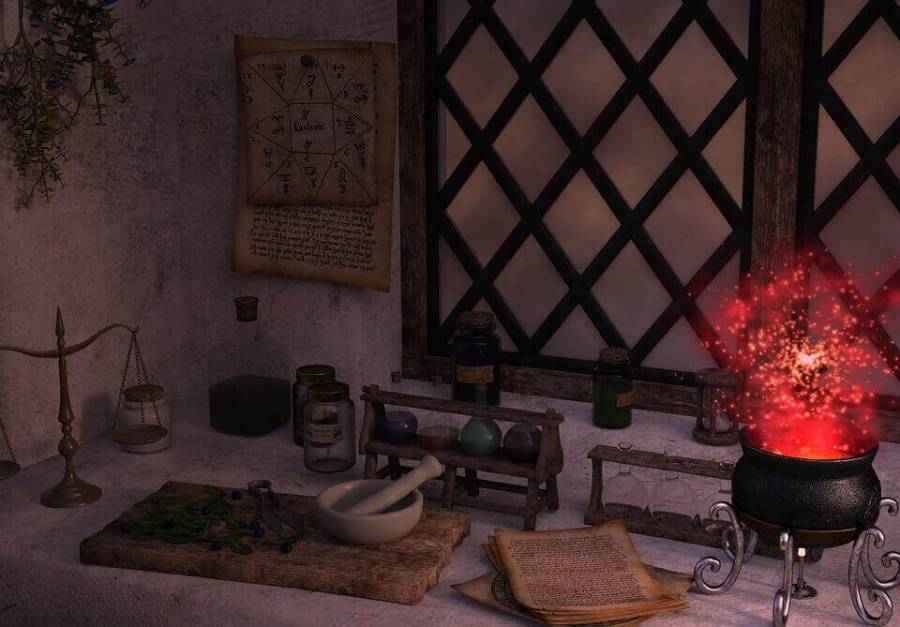
The year 1609 would be a black chapter for Logrono (a city in northern Spain). In nearby France (Labourd province) nearly 600 people had been tried for witchcraft and an astounding 100 of them had received the death penalty. Several scared people escaped from the affected areas and entered Spain. Now if unknown strangers with doubtful credentials, enter a new country what happens? As would be obvious - a mass paranoia. These set of incidents would set up a chain of events, which culminated in Basque witch trials, which started in Logrono in January 1609.
Skeptical and scared of the outsiders, the local authorities asked the Spanish Inquisition for help. The Spanish Inquisition soon took up the job at the earnest and soon a list of women, men and even children were identified as accused. 31 of the accused had auto -da -fe (the act of faith or public penance of condemned heretics) declared against them; with 6 being burnt at stake and other 5 dying of torture during the interrogation. The first phase of Basque witch trials ended in 1610.
Further proceedings on the matter were suspended as the issue was suspected to be much graver than what was anticipated. As the widespread presence of witches in the Basque region was suspected, so a junior inquisitor of a 3-man tribunal was sent in 1611, to gather further evidence and see things for himself in the countryside. This inquisitor – Alonso Salazar Frias, was armed with “Edict of Grace”, which promised pardon to all those who confess their crime (of indulging in witchcraft) and divulge the names of their partners in the crime.
Alonso Salazar Frias returned with a confession of 1802 people, of whom 1384 were children between 7 to 14 years. Of course, most of those who confessed to their crimes also gave a list of names of their accomplices, which was another 5000 people. Unfortunately for the inquisitors only 6 of those who had confessed, maintained their confession later on, while others retracted their statement, attributing it to the torture inflicted upon them.
The youngest inquisitor – Alonso Salazar Frias, was himself disillusioned with the whole procedure, mentioning that he had found no substantial evidence of witchcraft during his travel. He raised questions on the whole logic of the trials. His seniors – Alonso Becerra y Holquin and Juan del Valle Alvarado strongly opposed Alonso Salazar, claiming him to be in league with the devil. Due to controversy, the matter was sent to the Inquisitor General. Luckily the Inquisitor General demonstrated much wisdom for his time and in August 1614, dismissed all trials (for witchcraft) pending in Logrono.
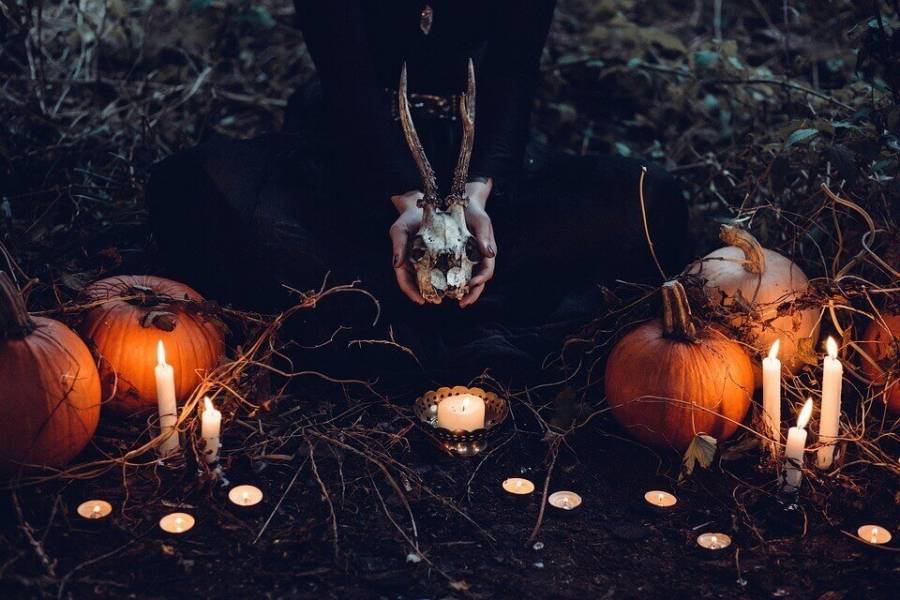
Although witch trials were not new in Europe, the way 7000 people were accused of witchcraft between 1609 to 1614, was itself an outrageous act which gave Basque witch trial the dubious distinction of being the biggest witch trial in history.
Pendle witch trial which occurred in Lancashire, England in 1612 was held at the time when England was ruled by King James I who ascended to the throne on 24th March 1603 and previously ruled Scotland as James VI – King of Scotland. The North Berwick Witch Trials – which as discussed previously were the most infamous of all witch trials in Scotland, in which King James, who at the time ruled Scotland, had taken an active role.
After the King took over the throne of England, he soon faced a conspiracy & assassination attempt in the form of the gunpowder plot. Although the King had survived this attack on his life, he was left very much skeptical and paranoid of people around him, who may use natural or unnatural means (witchcraft) to harm him.
King James had written a book concerned with Blackmagic and witchcraft in 1597 – Daemonologie, which had made the views of the king very clear to his subjects. The ordinary people were to condemn witchcraft and expose witches and their supporters to society, whenever they came to know about them. Many people were influenced and believed the power of witches to cause harm by the use of black magic and agreed wholeheartedly with the king’s views. The King was a devout Protestant and Lancashire (where the trial was held) was considered an area with Catholic supporters; hence many people living in the area were looked upon with doubts.
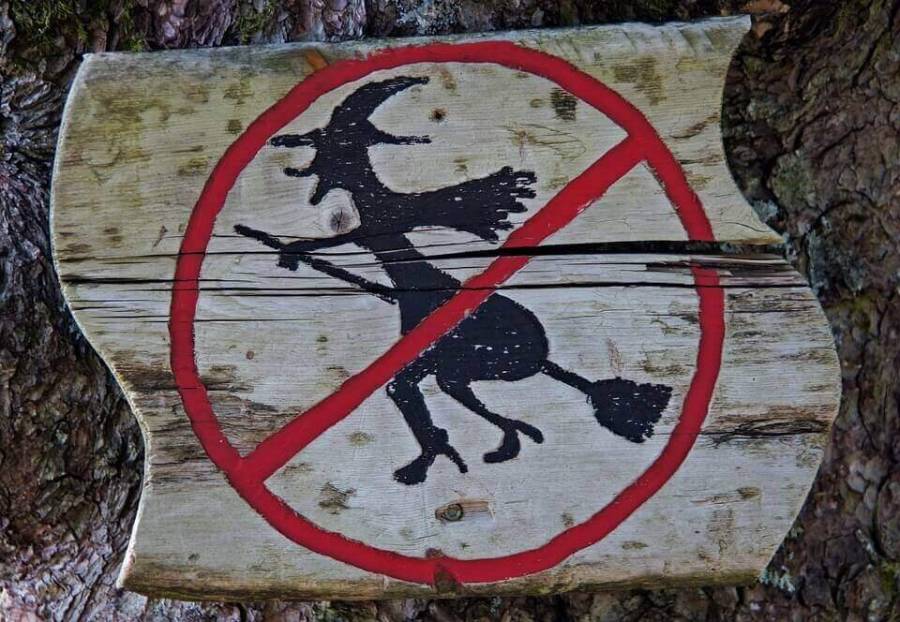
In the midst of what was perhaps one of the most notorious witch trials in England, were 2 poor rival families, headed by widows – Elizabeth Southerns (of Demdike family) and Anne Whittle (of Chattox family), who lived in the area surrounding Pendle Hill in Lancashire. Elizabeth Southerns was a village healer, who dealt in herbs and medicines & hence was known to possess knowledge which was not common (and people knew her as a clever woman). She lived with her daughter – Elizabeth, grandson – James, older granddaughter – Alizon and younger granddaughter – Jennet.
It was in March 1612, when Alizon asked a pedlar – John Law for a pin, which he refused. In rage Alizon cursed him & as luck would have it, John Law suffered from a stroke. He fell to the ground, was paralyzed on one side and unable to speak. Of course, he blamed Alizon for his condition, accusing her of witchcraft. The case was reported to the local magistrate – Roger Nowell. Alizon on her part claimed that she had asked the devil to lame John Law. She also admitted that her grandmother – Elizabeth Southerns and members of Chattox family indulged in witchcraft. The Chattox family had always been at loggerheads with them & this accusation was an act of revenge.
On further inquiry, other members of Demidike family leveled accusations at each other and also against members of the Chattox family. Elizabeth Southerns and Anne Whittle also admitted to selling their soul to the devil. Elizabeth Southerns also admitted to making a clay model of her victims. When these were destroyed, real harm would come to the victims in real life. It was highly obvious that the accused were digging their own graves. There were enough charges for the trials to be conducted against the accused, which were held between 17th and 19th August 1612.
Elizabeth Southerns never reached the trials; the torture and harsh interrogation had already resulted in her death. The youngest member of Demdike family – 9-year-old Jennet Device, gave testimony against her own mother, sister and brother and many other accused! Alizon Device herself believed that she possessed superpowers & it was her curse, which had caused John Law to suffer his misfortune! She even confessed to this while bursting into tears.
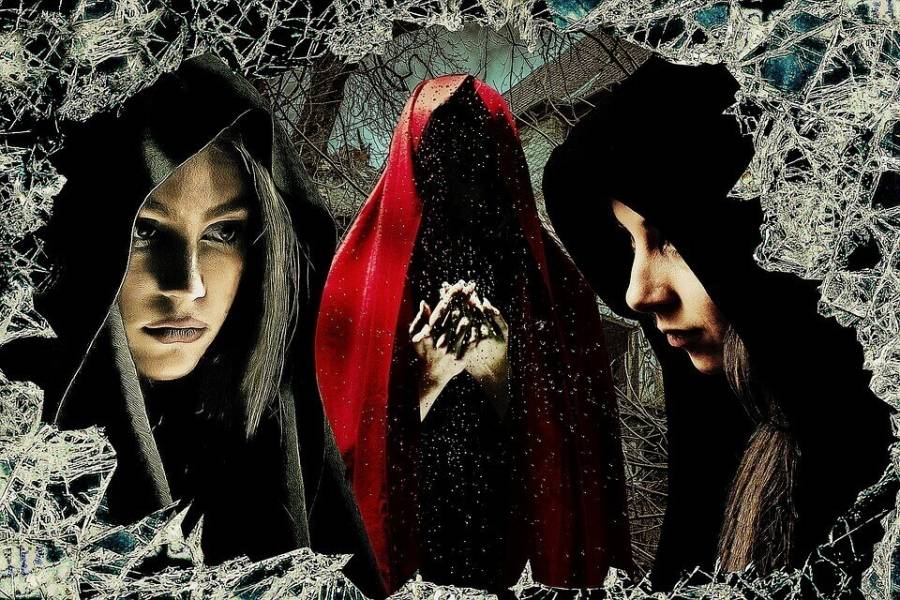
Now it is believed that accused involved in the trials thought that the power and fame of being a witch would bring them financial prosperity, as people would pay them well to avail of their services. However, as the wild accusations and public opinion escalated, things totally got out of hand. Of the 12 people accused, 10 people were executed and one was found not guilty ( and Elizabeth Southerns had died in custody).
Wurzburg witch trials, which were held between 1626 to 1631 in Wurzburg, a city in northern Bavaria, Germany clearly qualifies to be called as one of the biggest witch trials in Europe, with perhaps the largest mass trials and mass executions. In this story of witch trials in Germany, no person of any age, sex, profession, social stature was safe. 157 men, women and children from the city of Wurzburg, were burnt at the stake (among 219 executions within city limits) and around 900 killed in the entire area.
There was a witch hysteria which had caused a spate of witch trials in southern Germany in the period and the accused were those who were suspected of indulging in sorcery, witchcraft or had allegiance to the devil.
The trials were initiated at the behest of the prince bishop of Wurzburg – Julius Echter von Mespelbrunn and later continued under his successor (his nephew) – Philipp Adolf von Ehrenberg. Philipp Adolf von Ehrenberg, was very active in the persecution of those who he believed to be practicing witchcraft. Of the 900 people who were sentenced by him to be killed, included – his own nephew, 19 Catholic priests, and even children.
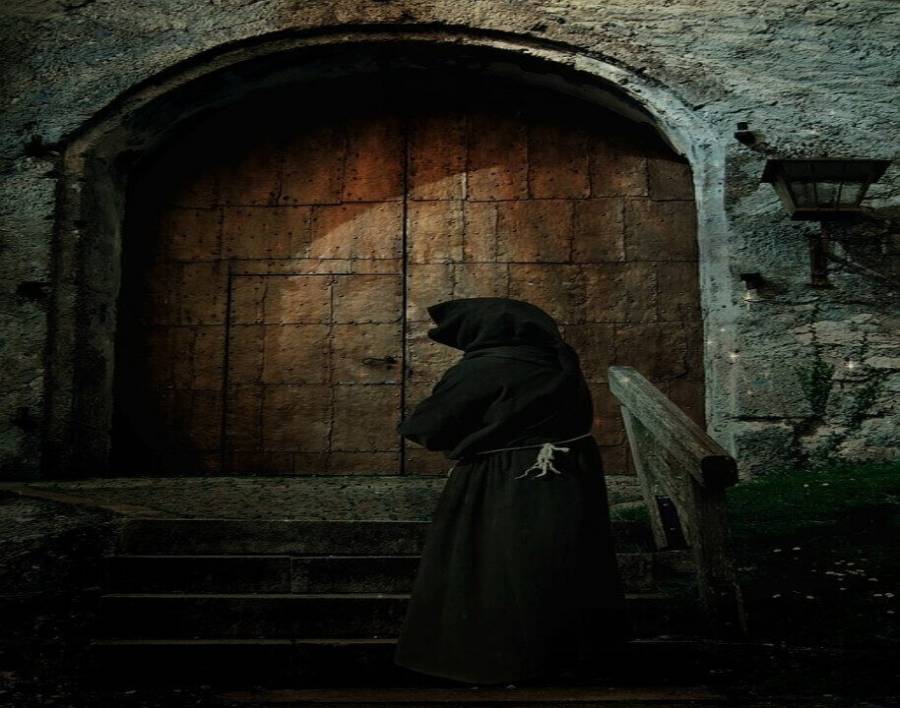
Even noblemen, councilors, mayors and their family members were charged and arrested. No regard for age, rank or sex was given. The charges varied from a serious offense like murder to outright ridiculous ones like – humming a song with the devil or being a vagabond/wanderer passing through town without a sound logical reason. It was only on 16 July 1631, when Philipp Adolf von Ehrenberg died and the city was taken over by the King of Sweden – Gustavus Adolphus, that the witch trials ended.
Witch trials of America are much less known to the people (except of course to the people living in the United States themselves) when compared to witch trials of Europe, which attained more notoriety. Tales of witchcraft were already known among the natives when the first European settlers came to the new world. Coming with hopes of new life, the reality did not match the expectations for many settlers. Besides dealing with natives (who were sometimes really hostile) these new settlers also had to face, hunger, inhospitable terrain and climate, along with frequent disease epidemics. The troubles needed solutions or people to blame, the second option was far easier to find.
Troubled people usually seek refuge in god (nothing wrong in that) and sometimes believe that devil and his followers are responsible for all the problems in the world (things become dicey at this point). People who were different in looks & appearances, religion, thinking or lifestyle were looked upon with skepticism and were prone to becoming a scapegoat in times of difficulty.
The accusation of witchcraft first emerged in Connecticut around the middle of the 17th century. A single witness was sufficient enough to start a trial and sometimes even for conviction. In 1642, Connecticut had already made witchcraft a crime punishable by death. As expected, the law was acted upon and 9 women and 2 men were later executed. However, here we would restrict our discussion to the case which became the most well-known of all witch trials of America - The Witch trials of Salem.

The Witch Trials in Salem (Introduction)
The witch trials and persecutions in Connecticut were already on their way down on the closing decade of 17th century when an accusation of witchcraft and its associated complications occurred in witch trial of Salem, the preliminary hearings for which were conducted in Salem Town, Salem village (modern-day Danvers, Massachusetts), Ipswich and Andover.
The Witch Trials of Salem – The Beginning of Trouble
Before we go into details of witch trials of Salem, an understanding of the situation of colonial North America of the time would be certainly helpful. In 1689, a war had started between the French and English forces in the American colonies, which became famous as King William’s war. As happens in war, widespread destruction created many refugees moving into other places, including Salem village in Massachusetts. These people obviously created a burden on local resources. Also, there was an increase in poor and vulnerable population. Other factors which added to the unrest were – fear of attacks of native American tribes, a recent smallpox epidemic, and rivalry with people of affluent Salem town.
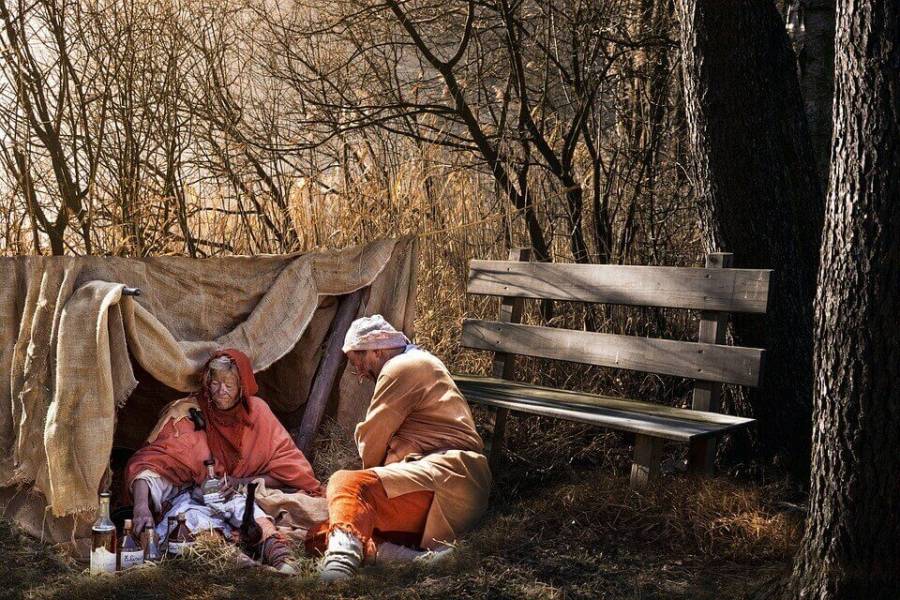
At the same time, Salem village got its first ordained minister in 1689 – Reverend Samuel Parris, who was very strict by nature. The village was already rife with suspicion and resentment of people towards neighbors and strangers alike. The tension levels were gradually increasing. Just when people thought things can’t get any worse, Reverend Parris’s daughter Elizabeth (who was 9 years old) and niece – Abigail Williams (aged 11 years) started having fits.
As the children started screaming, throwing things and bending their body into an abnormal shape, the local doctor, gave a diagnosis which was best suited for these kinds of observation seen in 1692 – witchcraft! Soon other young girls in the community started to develop similar symptoms. Now it was really important to find the witch quickly, who was responsible for all this. Miraculously the brilliant members of the community found the witches soon enough when the young girls pointed fingers at 3 women. It was Reverend Samuel Parris’s Caribbean slave – Tituba and her 2 accomplices – a homeless beggar Sarah Good & a poor old woman Sarah Osborne. It seems that the weakest and the most vulnerable members of the society were responsible for all the troubles.
The Salem Witch Trials – The Investigations
The interrogation of the accused started on 1st March 1692. Tituba was the only woman who confessed to her crime, but the other two vehemently opposed all the charges. The presence of young girls in the court, who appeared to be in great pain and were screaming & twisting their body, made the authorities believe that urgent remedial measures were certainly required. As a slave, Tituba must have realized that her fate was sealed and she tried to appear as an informer & informed the court of many other people, who also practiced witchcraft.
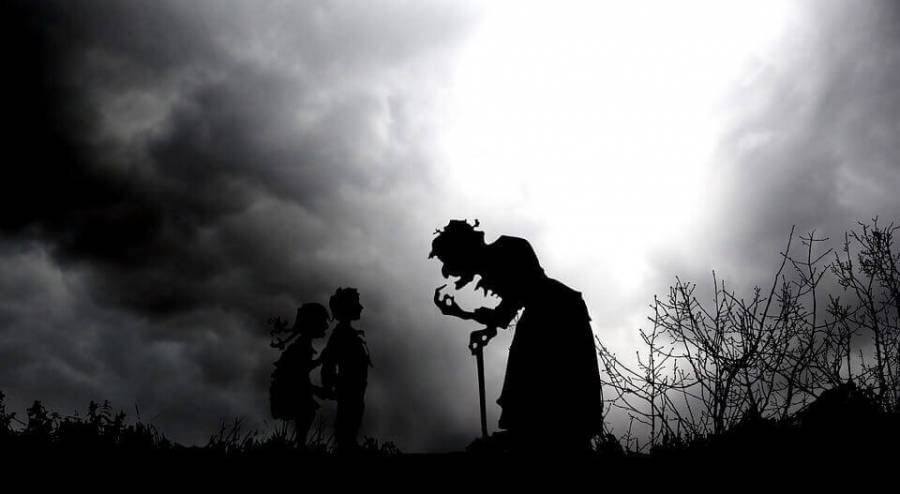
Adult & established members of society also encouraged the young girls to name all those that they suspected and soon a big list was made, consisting of many middle-aged women, men and even the 4-year-old daughter of Sarah Good, all of whom were branded as witches. Soon the list of men and women accused of witchcraft and devil worship from Salem village and surrounding areas had grown to a significant number, which needed special arrangements. A special court of Oyer and Terminer (to hear and to decide) was ordered to be formed on 27th May 1692 by Governor William Phipps.
In June 1692, the special court formed to judge the accused, assembled in Salem under Chief Justice William Stoughton. The first to be tried was Bridget Bishop, who had been accused by a greater number of people than any other standing trial. She had been married 3 times, frequented taverns, wore a stylish dress and hence considered a woman with loose moral character. Although she screamed of her innocence but to no avail. She was hanged on June 10 of the same year.
The Witch Trials of Salem – The Judgement
Bridget Bishop was the first accused to be executed but certainly not the last one. 20 people were executed (19 were hanged on Gallows hill & 71-year-old Giles Corey was pressed to death with heavy stones) of the more than 200 accused. Things were getting out of hand and many respected men of the time like – Minister Cotton Mather and Increase Mather (then president of Harvard College and Cotton’s father) questioned the trials and methods used in it. Governor Phipps realized the gravity of the situation when his own wife was questioned for witchcraft.
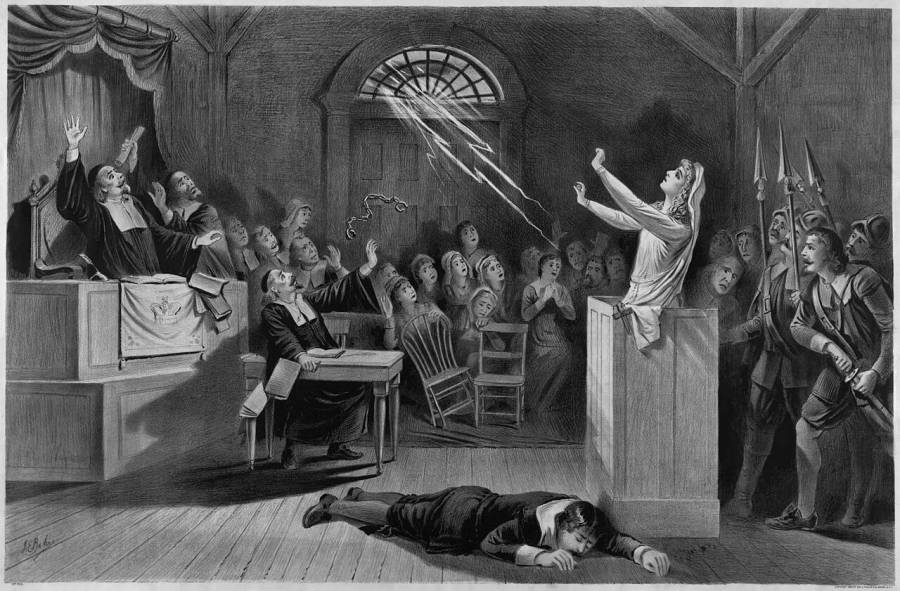
Soon the Governor dissolved the Court of Oyer and Terminer (and replaced it with a Superior Court of Judicature) and prohibited further arrests. Finally, all those who were in prison on witchcraft charges were pardoned by May 1693 and released. The Salem witch trials had effectively ended.
The Salem Witch Trials – A Journey of Atonement
A few years later on 14th January 1697, the Massachusetts General Court declared a day of fasting and soul searching for the tragedy of witch trials in Salem. In a step to correct the wrongdoings, in 1702, the trials were declared unlawful by the court. In 1711 a bill was passed to restore the rights and good names of those accused and 600 pounds worth of compensation were given to the heirs of the victims. Ultimately, in 1957 Massachusetts finally (and formally) apologized for the events of 1692. On 5th August 1992, on the occasion of 300th anniversary of the trials, Salem Witch Trial Memorial was built and dedicated to the memory of the victims.
The Witch Trials in Salem – When Science Comes to Rescue
Many modern-day analyses of the situation of the events of the time have been undertaken by different scholars and institutions. According to a study published in Science magazine in the year 1976, it was a fungus ergot which is found in contaminated wheat, rye, and other cereals; that may have been responsible for producing the symptoms of delusions, hallucinations, vomiting and muscle spasms; the typical symptoms that were seen in the victims/witnesses of witch trials in Salem.
The biggest tragedy of the witch trials held during the early modern period of history was not just the terrible loss of innocent lives but how easily the simple man & woman on the streets were influenced to inflict so much suffering on their fellow humans, all the while believing that they were doing the right thing.

Witch trials and executions are a part of history in the major parts of the world. However sporadic news of lynching and executions of witches have been heard even in the 21st century. One thing which has not changed over centuries is good people making bad decisions, all the while believing that they are doing the right thing.
Many of the people supporting the witchcraft trials rightfully believed that their views and actions were meant for a better world. Although executions of witches is an old story, however being suspicious & skeptic and even hateful towards people who are different from us is something that has not changed over the centuries. Nor has the tendency to exploit people who are weak and poor. Unless these basic human habits are eliminated, witch trials in some form or another will always continue.
(Disclaimer – The article does not carry any disrespect towards any person based on their religion or nationality, but describes real events in history as it really happened. The trials and punishment of the accused witches were acts of gross human rights violation and misuse of authority, and it is important to understand the past so as not to make the same mistakes in the future. Without compromising the accuracy of history, the description of these gruesome events has been intentionally toned down, so as to be palatable for a discussion in a civilized society.)